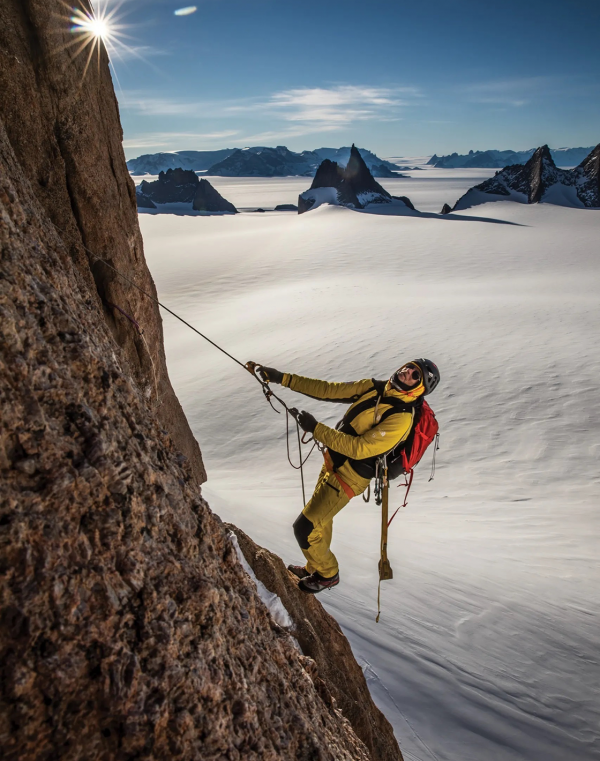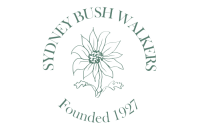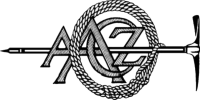- Home
- Nepal
- Adventure Activities
- Peak Climbing
- Mountain Expedition
- Local Tours
- Sirubari Village Homestay
- Ghale Gaun
- Kalinchowk Tour
- Halesi Mahadev - Maratika Cave package
- Chitwan Jungle Safari
- Day tour in Kirtipur
- Day tour in Kathmandu City
- Spiritual Tour to Muktinath
- Chitlang and Kulekhani
- Bardiya National Park
- Jeep Tour to Rara Lake
- Gosaikunda Lake
- Manakamana day Tour with cable-car ride
- 4WD Jeep Tour to Upper Mustang
- Family Holidays
- Heli & Mountain Flights
- Trekking Routes
- Kailash Mansarovar
- Bhutan
- Tibet
- Multi Country
- Domestic Flights
- Contact
- Home
- Nepal
- Adventure Activities
- Peak Climbing
- Mountain Expedition
- Local Tours
- Sirubari Village Homestay
- Ghale Gaun
- Kalinchowk Tour
- Halesi Mahadev - Maratika Cave package
- Chitwan Jungle Safari
- Day tour in Kirtipur
- Day tour in Kathmandu City
- Spiritual Tour to Muktinath
- Chitlang and Kulekhani
- Bardiya National Park
- Jeep Tour to Rara Lake
- Gosaikunda Lake
- Manakamana day Tour with cable-car ride
- 4WD Jeep Tour to Upper Mustang
- Family Holidays
- Heli & Mountain Flights
- Trekking Routes
- Kailash Mansarovar
- Bhutan
- Tibet
- Multi Country
- Domestic Flights
- Contact
Chomolhari Trek

An exciting Trekking experience
Chomolhari Trek – Chomolhari Trek I is a standout amongst the most prevalent trek in Bhutan. With elevation contrasts of 2,500m and almost 5,000m (most minimal and most astounding purpose of the course), it offers a wide scope of scene ,fauna and greenery. The feature of this trek is the breathtaking perspective on Mount Chomolhari from Chomolhari Basecamp, Jangothang. Almost the entire trek experiences a little piece of the Jigme Singye National Park, passing a couple of the Yak herder's settlement and the remotest area of Lingshi. One ought to be sensibly physically fit to appreciate the superb mountain sees, persevere through slender air, peacefulness and the wild of the scene while on the trek.
4 - 26
Detailed Itinerary
- Day 1 :Arrive Paro Airport by Drukair
You will be met by our guide on arrival and transferred to your hotel to settle in. After lunch visit the Paro Dzong and the National Museum. The evening ends with a walk through Paro’s main shopping district.Overnight stay at hotel. - Day 2 :Sightseeing around Paro
Day excursion of sightseeing to Taktsang Monastery / Tiger’s Nest, the most spectacular monastery and probably the most photographed one in Bhutan, in a way a symbol of Bhutan. It is said that Guru Rinpoche arrived here on the back of a tigress and meditated at this monastery hence it is called “Tiger’s Nest”. The excursion to monastery’s view point takes about 5 hours for round trip. Lunch will be served at the cafeteria, followed by a short walk back. Evening stroll Paro town for leisure. Overnight stay at hotel. - Day 3 :Drugyel Dzong – Sharna Zampa (start trek)
Distance 17km, four to five hours, 360m ascent, 80m descent, camp altitude 2,850m). Drive up to Drukgyel Dzong (2,580m) where the road ends and the trek begins. With a gradual climb the trail follows the Paro Chhu passing beautiful meadows, paddy fields and impressive farm houses. After about four hours you will reach the army post at Gunitsawa village. At the army checkpost your trek permit (provided by your tour operator) will be checked and endorsed.The campsite is on the opposite side of the river, not far from Gunitsawa. - Day 4 :Sharna Zampa – Thangthangkha
Distance 22km, seven to eight hours, 770m ascent, 10m descent, camp altitude 3,610m). On this long day, the trail continues with lots of small ups and downs. After goinguphill through the river valley, you enter the Jigme Dorji National Park. The valley finally narrows gradually to a mere path which descends to a meadow where a camp will be set up. From here, if weather permits, you will have the first great view of Mount Chomolhari. - Day 5 :Thangthangkha – Jangothang
Distance 19km, five to six hours, 480m ascent, camp altitude 4,080m). If you did not see Mount Chomolhari last evening, you will have a great chance to get a great view this early morning. This morning the trek continues up the Paro Chhu valley which widens into patches of alpine meadow and scanty growths of forest. Cross an army outpost along the way and enjoy a spectacular view of high mountain ridges and snow-capped peaks. Yaks and the herder’s homes become a regular feature of the landscape. Passing the villages Soe, Takethang and Dangochang is another asset on this day. Reaching Jangothang, one of the most beautiful campsites of the Himalayas, you will again have a spectacular view of Mount Chomolhari. - Day 6 :Rest Day at Jangothang
The day in Jangothang provides plenty of possibilities for day hikes with great views on lakes and snow capped mountains such as Jomolhari and Jichu Drake. There are good chances to spot some blue sheep on the upper slopes of the valley. Jangothang is a perfect environment for your acclimatisation. Trek up to Tosoh or hike around the area. There are good short hiking trails in three directions. Jumolhari and it’s subsidiary mountain chains lie directly west, Jichu Drake to the north and a number of unclimbed peaks to the east. - Day 7 :Jangothang – Lingshi
Distance 18km, six to seven hours, 840m ascent, 870m descent, camp altitude 4,010m) After 15 min. from the camp the trail climbs rapidly for about half an hour and then becomes a gradual ascend to the Nyilila pass at 4,870m. While on the climb enjoy the sourrrounding. You might see herds of blue sheep grazing on the slopes of the mountains. From the pass you will have spectacular views of Mt. Jomolhari, Jichu Drake and Tsherimgang, all of them rising above 7,000m. On the way down to the camp you will pass by some of the yak herder’s tent, made from yak wool, where the herders take shelter while on the move to various pastures for their yaks. As you come down into the Lingshi basin, you get a wonderful view of Lingshi Dzong on a clear day. Tserimgang and its glaciers rise up at the north end of the valley. The campsite is next to a stone hut you reach just before Lingshi Dzong. - Day 8 :Lingshi – Shodu
Distance 22km, eight to nine hours, 940m ascent, 920m descent, camp altitude 4,080m) The trail climbs up to the Yelila pass at an altitude of 4,930m. From the pass, on a clear day you will get an excellent view of Jumolhari, Tserimgang and Masanggang. The trek from the pass to the campsite at Shodu is a steep downhill. - Day 9 :Shodu – Barshong
Distance 16km, five to six hours, 250m ascent, 670m descent, camp altitude 3,710m). The trail follows the Thimphu Chhu through rhododendron forests, past beautiful waterfalls along the way. The valley narrows till the path takes to the slopes and gradually ascends to the ruins of Barshong Dzong. - Day 10 :Barshong – Dolam Kencho
Distance 15km, four to six hours, 290m ascent, 640m descent, camp altitude 3,320m). The trail descends down to the Thimphu Chhu river valley, through dense forests of rhododendron, birch, conifer, maples and bamboos and then ascends to pasture lands. The camp is in a meadow. - Day 11 :Dolam Kencho – Dodena
Distance 8km, three to four hours, 500m ascent, 930m descent). The trail continues through forested areas winding up and down and through a small pass. Langurs (monkeys) can be seen along the way. In Dodena, you will exit the Jigme Dorji National Park and reach the road head next to a impressive cantilever bridge. - Day 12 :Drive from Thimphu to Paro
Sightseeing of Thimphu valley includes the National Library, Traditional Medicine Institute, Arts & Crafts School, Textile and Folk Heritage Museum, National Memorial Chorten, Zilukha Nunnery, Traditional paper factory, Zilukha Nunnery, Takin mini Zoo, Handicrafts Emporium, local shops. Finally visit to Tashichho dzong which houses most of the Government office and King’s Throne room. Evening depart to Paro.Overnight at hotel. - Day 13 :Departure
After breakfast our representative will drop you to the Paro International Airport and bid you farewell.
This trip can be redesigned or redeveloped as per your taste, For more information please e-mail us at This email address is being protected from spambots. You need JavaScript enabled to view it.
Cost and dates
We do small group trek or private trip as your request.
For quick information / contact us at whatsapp/viber + 977 9841815039
Or Drop us inquiry at This email address is being protected from spambots. You need JavaScript enabled to view it.
Tips & Resources
What's Included
- Hotel accomodation on twin sharing basis; single suppplement is available upon request with extra surcharge as applicable.
- Meals; B=Breakfast, L=Lunch; D=Dinner and evening tea with biscuits.
- Transport within Bhutan.
- Trekking equipment like sleeping bag, dining tents, kitchen tents, toilet tents, mattresses, etc.
- Services of experienced licensed English speaking guides.
- Trekking cooks and trek assistant.
- Supply of pack and riding ponies.
- Bhutan visa fees.
- Royalty and taxes.
What's Excluded
- Departure Tax where applicable.
- Air fare.
- Travel insurance.
- Rescue operations by helicopters.
- Excess baggage charges.
- Mineral water, soft drinks and any alcoholic beverages, cigarettes, laundry, telephone calls, tips and any other personal expenses.
- Nepal Visa (if entering Bhutan through Nepal)
- Any services in Kathmandu/Nepal (hotels, transport, etc)
- Any cost arising from political disturbances, strikes, cansellation of flights, deviation in program, delays due to landslides/ road blockage or otherwise.
Useful Info
Visa Information
Indian, Bangladeshis and Maldivian nationals can obtain a visa at the port of entry on producing a valid passport with a minimum of 6 month validity (Indian nationals may also use their Voters Identity Card (VIC). For other tourists, you will to need to acquire visa clearance in advance. Visas are processed through an online system by your licensed Bhutanese tour operator, directly or through a foreign travel agent. Tourists are also required to book their holiday through a Bhutanese tour operator or one of their international partners. The tour operator will take care of Visa arrangements for visitors.
You are required to send the photo-page of your passport (passport scanned copy) to your tour operator who will then apply for your visa. The visa will be processed by the Tourism Council of Bhutan (TCB) once the full payment of your holiday (including a USD $50 visa fee) has been wire transferred and received in the TCB bank account. Once received the visa clearance will be processed within 72 working hours. At your point of entry you will be required to show your visa clearance letter, and the visa will then be stamped into your passport.
Weather Information
There is no appropriate season as which is go say that Bhutan’s warm and temperate climate, never-ending festivals and rich and abundant heritage sites provide visitors with a wide array of experiences throughout the year across the country. Bhutan has all four seasons and the climate varies widely depending on the altitude.
Spring (March, April & May) - This time is considered the most beautiful time of the year, resplendent and ablaze with a spectacular array of bright colors. This is the time when the valleys are green with fresh vegetation and fruit trees are blossoming – the time when locals are naturally mirthful and cheery; when visitors are most welcome. Also, you can witness the famous Paro tsechu festival.
Autumn (September, October & November) - Autumn is lovely with clear and crisp blue skies, providing a grand view of some of the tallest unclimbed mountains in the world. It is the best time for trekking and traveling. The climate is cool and temperate and you can get lovely photography opportunities of willows shedding their golden brown leaves, the solitude of parks and somber views of dzongs and monasteries.
Monsoon (June, July & August) - During these months, Bhutan receives more rainfall than any other region in the Himalayas. Glorious sapphire skies and warm weather is a pleasant time to spend visiting places of cultural and historical interest though this season is not the best time for trekking. Enjoy a cup of warm, aromatic tea while watching the rainfall from your hotel window. Or if you possess an adventurous spirit, grab an umbrella/raincoat while it is raining and take a day tour through the town.
Winter (December, January & February) - Winter in Bhutan is sunny, cool and agreeable to say the least. Much of the east-west highway remains snowbound during winter. It is the best time to tour the western districts of Paro, Wangdue, Punakha, Thimphu and Haa. One of the chief attractions in winter is the beautiful Gangtey (Phobjikha) valley where you can expect to see a wide expanse of rolling plain with bamboo shrubs.
Safety Guidelines
- Credit cards are not a convenient source of payment in Bhutan as only a handful of hotels in a few places provide this facility. Also, only MasterCard and Visa. US dollars are the most convenient currency and are cashed by most banks.
- You should avoid drinking tap water altogether, but it is okay to use it for brushing your teeth. Bottled water is widely available and is best for drinking. It is also wise to carry water purification tablets when trekking in remote locations of Bhutan.
- The local currency is the Ngultrum, which is pegged to the Indian Rupee. Note: The Indian Rupee in denominations of 500 and 1000 are no longer accepted in Bhutan.
- Bhutan is the only country in the world that has banned the consumption and sale of tobacco, resulting in smoking being largely disallowed in public places. Having said that, consumption is not completely prohibited in Bhutan so if you want to smoke, bring your own cigarettes and ask your guide where you can light up. (seal opened pack only)
- Tuesdays are considered the national 'dry day,' with the sale of alcohol prohibited.
- When taking photos/filming inside Dzongs, monasteries, temples, or any religious institutions, check with your guide whether it is permitted as some areas do not allow it.
Visit us
-
JP Marga, Thamel, Kathmandu, Nepal
-
+977-01-5365371
-
+977 98418-15039
(Whats App, Viber & Telegram)








